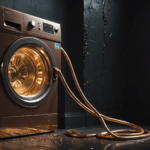One of the most immediate and noticeable signs that your HVAC system may be low on refrigerant is warm air blowing from the vents. If your air conditioning is supposed to be cooling your home and it’s not doing its job, this is an indicator that the system might be struggling with low refrigerant levels. Refrigerant is crucial in the cooling process—it absorbs heat from the indoor air and releases it outside. When there’s insufficient refrigerant, the system cannot effectively absorb and dispel the heat, resulting in warm air circulating through your home.
Warm air can signal a range of air conditioning problems, but when paired with other symptoms like strange noises from the unit or ice build-up on coils, it often points towards a refrigerant issue. Older systems, in particular, are susceptible to refrigerant leaks due to wear and tear over time. Moreover, improper installation or damage can also lead to leaks, reducing the refrigerant levels in the system.
Ignoring this problem can exacerbate the situation, affecting the efficiency of your HVAC system and leading to a spike in energy bills as the system works harder to achieve desired temperatures. Quick action, such as contacting a professional HVAC repair service, is crucial to assess and address the refrigerant levels. Below is a comparison of normal and abnormal scenarios for better understanding:
| Situation | Normal | Abnormal |
| Air Temperature | Cool air blows consistently | Warm air blows despite cooling setting |
| Energy Demand | Energy bills remain stable | Energy bills are unexpectedly high |
| Unit Noise | Quiet operation | Hissing or bubbling noises |
Acting early can prevent further damage to your HVAC system and ensure that your home remains comfortable throughout the warm months. If you notice your system is dispensing warm air instead of cool, it is advisable to call in experts to perform a comprehensive inspection and recharge the refrigerant as needed. Timely intervention can lead to more efficient cooling performance and prolong the lifespan of your HVAC system.
increased energy bills
If you’ve noticed that your energy bills are on the rise despite no significant changes in your household’s energy consumption habits, this could be an indicator that your HVAC system needs a refrigerant recharge. A shortage of refrigerant forces the system to work harder and longer in an attempt to maintain the desired indoor temperature. This increased workload results in higher energy use and, consequently, inflated energy bills. Here is how you can better understand this issue and address it:
- Monitor Your Energy Usage: Start by reviewing your energy bills over the past few months. Look for patterns or sudden increases in energy consumption. If your usage habits haven’t changed, yet the bills have, this is a red flag.
- Conduct a System Check: Check for other signs of refrigerant issues, such as warm air from vents or unusual noises from the HVAC unit. These symptoms combined can strengthen the suspicion of a refrigerant problem.
- Schedule a Professional Inspection: Contact an HVAC repair service to perform a thorough inspection of your system. The technician will measure your system’s refrigerant levels and check for leaks or other issues. They’ll also ensure that your system is operating efficiently, addressing any air conditioning problems that may contribute to the increased bills.
- Refrigerant Recharge and Repairs: If the inspection confirms low refrigerant levels, a recharge might be necessary. The technician will repair any leaks before recharging the system to prevent recurring issues. A properly sealed and fully charged system will operate smoothly, bringing your energy bills back to normal levels.
- Regular Maintenance: Establish a routine maintenance schedule for your HVAC system. Regular check-ups can prevent significant problems by catching minor issues early. Ensure that the system is checked annually by professionals who can recharge refrigerant as needed and perform any required repairs to enhance efficiency.
By following these steps, you not only address the immediate issue of increased energy costs but also contribute to the overall longevity and performance of your HVAC system, ensuring comfort and efficiency all year round.
ice buildup on evaporator coils
The presence of ice buildup on evaporator coils is a clear indication that your HVAC system might require a refrigerant recharge. Though it may seem counterintuitive, ice formation actually signifies that your air conditioning system is not cooling efficiently. This occurs because insufficient refrigerant levels disrupt the proper heat exchange process, resulting in the evaporator coils dropping to temperatures that cause moisture in the air to freeze upon contact.
One major concern is that ice buildup can significantly impair the overall efficiency of your HVAC system. When coils are covered in ice, the system struggles to maintain the desired indoor temperature, causing it to run more frequently and for longer periods, which can lead to further wear and tear. Additionally, the added strain on the system often develops into more complex air conditioning problems, ultimately requiring more extensive and costly repairs if not addressed promptly.
Furthermore, the restricted airflow caused by ice accumulation can exacerbate energy inefficiencies, causing your system to consume more power. This not only increases utility bills but also heightens the risk of the system overheating or even shutting down completely due to the excessive load. If you notice ice forming on your evaporator coils, it is prudent to contact a professional HVAC repair service promptly. Experts are equipped to assess the refrigerant levels, identify potential leaks, and provide the necessary repairs to restore normal function.
Regular inspection and maintenance of your HVAC system are critical in preventing the development of ice on evaporator coils. An expert technician can ensure your system is fully charged with refrigerant and that no blockages impede airflow. By addressing these components, you help maximize your air conditioning unit’s efficiency, prolonging its lifespan and maintaining optimal performance.
Remember, ignoring ice buildup could lead to repeated breakdowns and reduce the efficiency of your system over time. Proactive repairs and regular maintenance are not only essential for immediate performance but also for safeguarding against the need for more substantial repairs going forward. Keeping your HVAC system in peak condition ensures a consistently comfortable living environment while minimizing the likelihood of unexpected disruptions.
hissing or bubbling noises
If you hear hissing or bubbling noises coming from your HVAC system, it might be a sign that the system needs a refrigerant recharge. These unusual sounds generally point to refrigerant leaks, which occur when the pressurized refrigerant escapes from the system due to holes or cracks in the coils or lines. As the refrigerant leaks out, it produces a hissing noise similar to air escaping from a balloon. If the leak is particularly severe and refrigerant starts mixing with the air, it could also lead to the bubbling sounds.
Besides the noise itself, another indication of a refrigerant leak is a noticeable decrease in the cooling efficiency of your HVAC system. Refrigerant is the substance responsible for absorbing the heat from indoor air and releasing it outside. When the refrigerant levels are insufficient due to a leak, the air conditioning process is disrupted, leading to reduced cooling capacity that exacerbates existing air conditioning problems.
There is also an environmental concern with refrigerant leaks. Refrigerants, like Freon, contribute to the depletion of the ozone layer and can have harmful effects if released into the atmosphere. Therefore, handling a refrigerant leak is not only critical for your system’s operation but also important for the environment.
To address this issue, contacting an HVAC repair service should be a priority. A qualified technician can locate the source of the leak using specialized equipment, safely repair the damage, and recharge the system with the appropriate amount of refrigerant. It is crucial to ensure that this process is handled correctly, as improper repairs can lead to recurring problems and further damage to the system.
Moreover, regular inspections and maintenance can help detect potential refrigerant leaks before they become severe enough to cause noticeable noise or diminished cooling performance. Scheduled maintenance checks allow technicians to inspect the system thoroughly, identify weak spots, and make necessary adjustments, effectively preventing problems before they arise. Maintaining your HVAC system thus becomes an investment in both your comfort and the efficiency and longevity of the system.
By being attentive to signs like hissing or bubbling noises, you can avoid costly repairs and ensure your HVAC system operates smoothly, providing reliable comfort throughout the year. Remember to act swiftly when you note such issues to mitigate damage and maintain optimal performance from your cooling system.
frequent system cycling
If you’ve noticed that your HVAC system is turning on and off more frequently than usual, this could be another sign that it requires a refrigerant recharge. This behavior, known as short cycling, indicates that the system is struggling to reach the set temperature. When refrigerant levels are low, the air conditioning unit may not be able to effectively absorb and release heat, forcing it to cycle more often to try and compensate for the lack of cooling efficiency.
Short cycling not only makes your HVAC system less effective at maintaining comfortable temperatures but also leads to increased wear and tear. The constant starting and stopping put strain on the components of the system, significantly reducing its lifespan and increasing the likelihood of malfunctions. Such frequent cycling also affects energy consumption, turning what should be an efficient operation into a more costly one due to the increased energy demands.
To address frequent system cycling, it’s crucial to seek the expertise of a professional HVAC repair service. A technician will examine your system for refrigerant leaks or other potential air conditioning problems. If low refrigerant levels are confirmed, the technician will repair any leaks and recharge the system to restore its cooling ability and efficiency.
Regular maintenance is key in preventing short cycling and other associated problems. Scheduling routine check-ups allows for early detection of issues like refrigerant leaks, ensuring prompt corrective measures are taken. This proactive approach helps to maintain your HVAC system’s performance, avoiding costly repairs and ensuring a comfortable and climate-controlled home environment.
In conclusion, recognizing the signs that your HVAC system might need a refrigerant recharge is crucial for maintaining its performance and efficiency. From warm air emissions to ice buildup and short cycling, each symptom indicates underlying air conditioning problems that should be promptly addressed. By involving a professional HVAC repair service for regular inspections and necessary repairs, you can ensure your system remains effective, energy-efficient, and reliable throughout the year. Regular maintenance not only safeguards against disruptions but also serves as an investment in the longevity and health of your cooling system.











